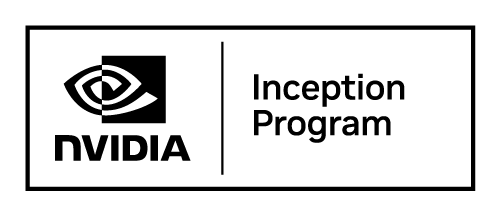Interview transcription helps turn spoken conversations into written text. It's often used to review, organize, or analyze what people said during an interview. Traditionally, this process has been done by people listening to recordings and typing everything out by hand.
Now, artificial intelligence (AI) can do this work automatically. With AI interview transcription, a computer program listens to the audio and creates a text version of the conversation. This process is faster and doesn't require someone to type every word.
AI transcription tools are used in many fields. Researchers use them to study interviews. Journalists use them to quote sources. Human resources teams use them to record interviews.
What is AI interview transcription?
AI interview transcription is the process of using artificial intelligence to convert recorded interviews into written text. The technology uses speech-recognition algorithms to identify words and sentences in audio recordings.
A transcription is simply a written version of what was said during an interview. This includes the words of both the interviewer and the person being interviewed. AI transcription differs from manual transcription because it uses computer software instead of a human typist.
The technology works by breaking down sound into small pieces and matching them to words in its database. Modern AI transcription can also identify different speakers and add punctuation automatically.
Common types of interviews that use AI transcription include:
- Research interviews
- Job interviews
- Podcast interviews
- Journalist interviews
- Customer feedback sessions

Key elements of AI interview transcription include:
- Speech recognition: The AI identifies spoken words by analyzing sound patterns
- Text conversion: The software converts recognized speech into written words
- Speaker identification: Many tools can tell when different people are speaking
Why use AI for your interview transcripts
AI transcription offers several advantages over manual transcription methods.
Speed – AI can transcribe a one-hour interview in about 5–15 minutes, while a human might take 4–6 hours for the same task.
Cost – Professional human transcription typically costs between $1–3 per audio minute. AI services usually charge $0.10–0.25 per minute.
Accuracy – Modern AI tools reach 85–95% accuracy on clear audio.
Scalability – You can transcribe multiple interviews at once, which is impossible with manual transcription.
Comparison Table:
How to transcribe interviews using AI
1. Choose reliable transcription software
Look for high accuracy, language support, file compatibility, and good editing tools.
Popular options: Otter.ai or Fireflies.
2. Upload or record your audio or video
Most platforms accept MP3, WAV, MP4, MOV, etc. Create an account, upload, choose settings, and start transcription. Some let you record directly or connect to Zoom.
3. Edit and verify the transcript
Review misheard words, punctuation, speaker labels, and remove filler words. Most editors show the text alongside the audio for easy review.
4. Export in multiple formats
TXT, DOCX, PDF, SRT, or share by link/email.
Best interview transcription software and tools
Research-focused tools (e.g., Notably) add tagging, sentiment analysis, and Zoom integration.
Media/journalism tools (e.g., Otter.ai) emphasize speaker identification and timestamps.
Budget-friendly options (e.g., Notta) give limited free hours or low-cost plans.
Key features to compare:
- Accuracy
- Speaker differentiation
- Language support
- Integrations
- Editing interface
Programs for transcribing interviews on a budget
- Free tools work for occasional use but often have limits.
- Freemium models offer free basics but charge for extras.
- Low-cost subscriptions ($8–20/month) are best for light, regular use.
Money-saving tips:
- Use free trials strategically
- Look for educational discounts
- Choose annual billing
- Share accounts when allowed
Tips for multi-speaker and noisy audio recordings
- Improve recording quality
Use external mics and test in your real environment. - Position microphones properly
Place close to each speaker; use headsets for remote interviews. - Use noise reduction features
Many tools can reduce consistent background noise and enhance speech clarity. - Edit speaker labels manually
AI may confuse voices—review and relabel as needed.
Who benefits from AI interview transcription
- Researchers – for coding and theme analysis
- Journalists – for fast, searchable quotes
- HR professionals – for consistent documentation
- Content creators – to turn interviews into other formats
Protecting privacy and data in interview transcripts
- Data security: Choose platforms with encryption
- Consent requirements: Inform and get permission
- Confidentiality practices: Limit access, anonymize data
- Regulatory compliance: Follow GDPR, HIPAA, etc.
Best practices:
- Store files securely
- Share only with authorized personnel
- Delete recordings when no longer needed
- Remove identifying details where appropriate
How Truffle combines one-way interviews with AI transcription
Truffle simplifies hiring by letting candidates record one-way interviews on their own time. Instead of scheduling live calls, candidates answer pre-set questions through audio or video. This gives hiring teams flexibility and creates a consistent experience for every applicant.
Behind the scenes, Truffle’s AI automatically transcribes each candidate’s response, breaking it down into searchable, structured insights. The result? Recruiters don’t have to sit through every recording. Instead, they get instant summaries with key takeaways, values alignment, and communication cues...all powered by AI transcription.
Truffle makes it possible to screen dozens of candidates quickly without sacrificing quality or consistency. AI transcription ensures every voice is heard, captured, and evaluated fairly with no more missed details and no more manual notes.
FAQs about AI interview transcription
How accurate is AI interview transcription?
85–95% on clear audio; lower with poor audio or accents.
How much does it cost?
Free for limited use; $10–30/month for most users; pay-per-minute also available.
Can AI transcribe interviews in multiple languages?
Yes, many tools support multiple languages, though quality varies.
How long does it take?
AI usually works 4–10x faster than real time, so a 60-minute interview might take 6–15 minutes.
Is AI transcription secure for confidential interviews?
Most platforms offer encryption and privacy settings—always check first.


